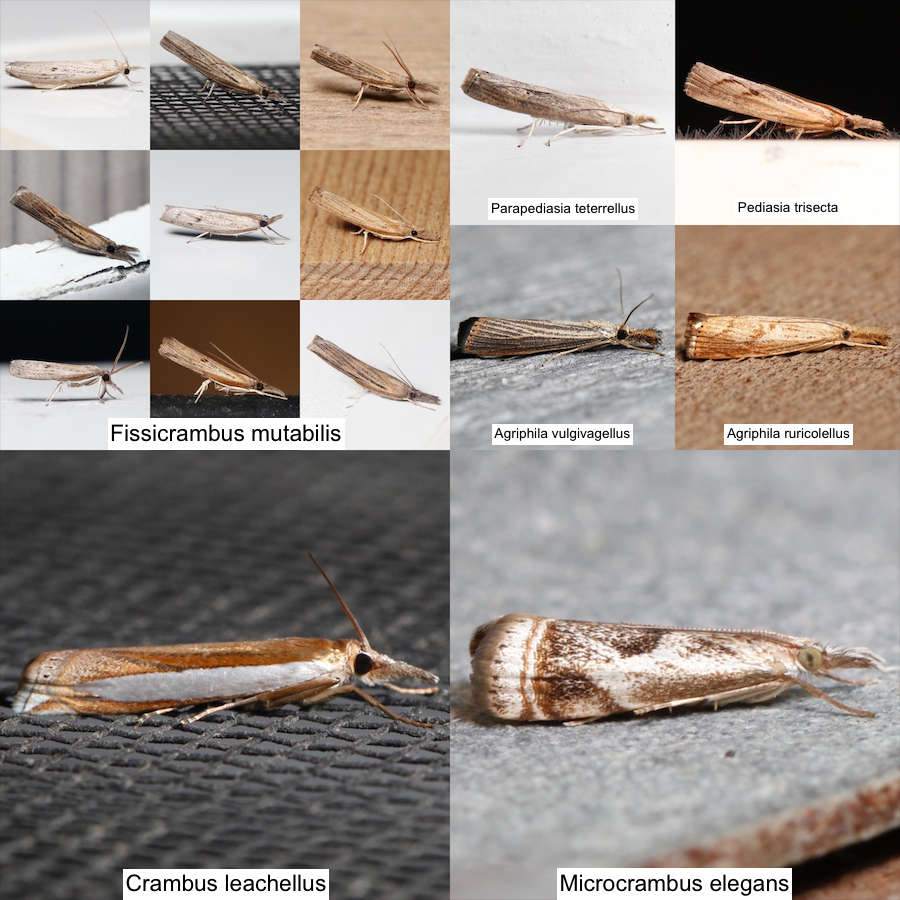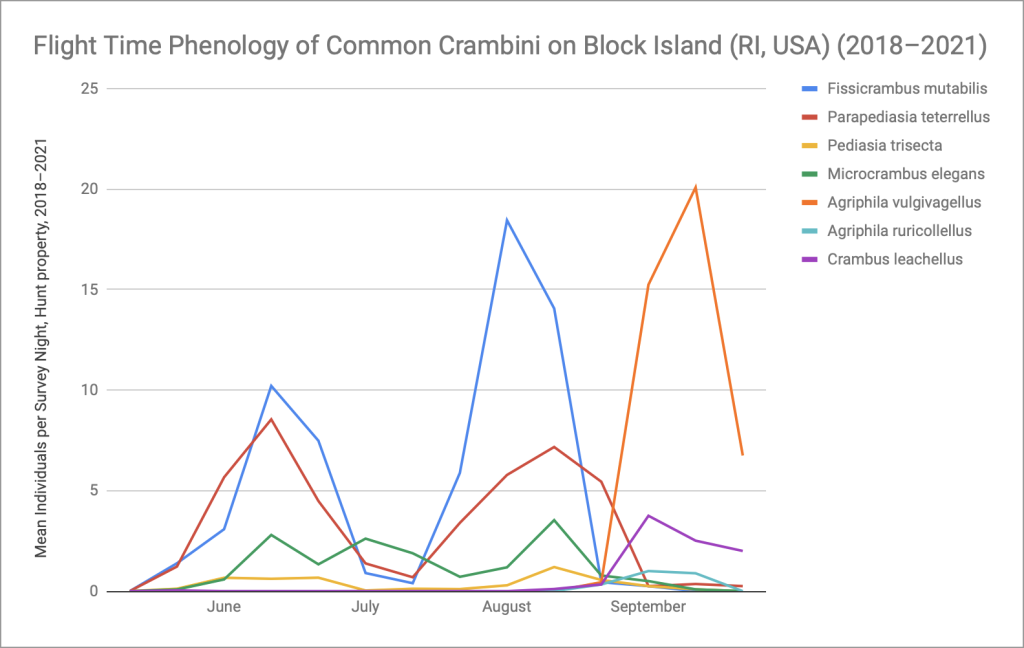Geometridae
130 species in 80 genera are known from Block Island. Moths in this family generally hold their wings flat at rest, and many hold their wings spread to reveal hindwings that are often as intricately patterned as the forewings.
Geometridae
130 species in 80 genera are known from Block Island. Moths in this family generally hold their wings flat at rest, and many hold their wings spread to reveal hindwings that are often as intricately patterned as the forewings.
Drepanidae
4 species in 4 genera are known from Block Island. Moths in this small family are mostly medium sized. Species in the subfamily Drepaninae generally resemble geometrids, and those in Thyatirinae resemble noctuoids.
Pterophoridae
16 species in 10 genera are known from Block Island. Moths in this family have a highly distinctive appearance characterized by very long, skinny legs and narrow, deeply lobed wings tightly folded together and held at right angles to the body. The island’s fauna was treated by Hunt and Matthews (2020); note that two species have been added to the island list since then.
Hunt, A.S., Matthews, D.L., 2020. Pterophoridae recorded on Block Island (Rhode Island, USA), 2018–2019. News of the Lepidopterists’ Society 62(2): 68–74.
Pyralidae
71 species in 41 genera are known from Block Island. This family of mostly small to medium sized moths exhibits a diverse array of larval feeding habits. Many species are gallmakers, borers, leafrollers, or have other phytophagous feeding habits. The family also includes species that feed on honey, wax, and larvae in beehives; several cosmopolitan pests of stored grain; and predators of other insects.
Crambidae
121 species in 71 genera are known from Block Island. This family of mostly small to medium sized moths includes leaf tiers, stem borers, and root feeders. Several species known from Block Island feed on aquatic vegetation.
Crambinae
This subfamily includes four of the ten most common moth species at the Hunt property lights, all in the tribe Crambini. These moths feed on roots of grasses as larvae and can be turf pests.


Limacodidae
5 species in 4 genera are known from Block Island. Caterpillars in this family are generally vivid green and slug-like. Adults of most Nearctic species are brown, some with green patches, and are small to medium in size with a stout appearance. The local fauna of this family is briefly discussed on the post for the superfamily; refer to my 2021 paper on the Zygaenoidea of Block Island for more detail.
Hunt, A.S., 2021. Moths of Block Island (Rhode Island, USA) I: Zygaenoidea. Northeastern Naturalist 28(4): 497–510.
Zygaenidae
2 species in 2 genera are known from Block Island. All Nearctic representatives of this family are black, some with red or orange markings, and many are diurnal. The local fauna of this family is briefly discussed on the post for the superfamily; refer to my 2021 paper on the Zygaenoidea of Block Island for more detail.
Hunt, A.S., 2021. Moths of Block Island (Rhode Island, USA) I: Zygaenoidea. Northeastern Naturalist 28(4): 497–510.
Tortricidae
198 species in 68 genera are known from Block Island. This family of mostly small to tiny moths is represented on Block Island by two large subfamilies. Tortricinae are generally polyphagous, while Olethreutinae tend to be more specialized. Larvae of most species build shelters on their host plants by folding or rolling leaves or feed internally as stem and fruit borers and gallmakers.
Cossidae
1 species is known from Block Island. Caterpillars in this family are wood-boring. This family’s Nearctic diversity is concentrated in the western US, and only a few species are found in the northeast.
Choreutidae
2 species in 2 genera are known from Block Island. Many species in this family of small to tiny moths have extensive areas of metallic scaling. Most are day-flying, though they may also occasionally come to lights. Consequently, the family is understudied on Block Island.